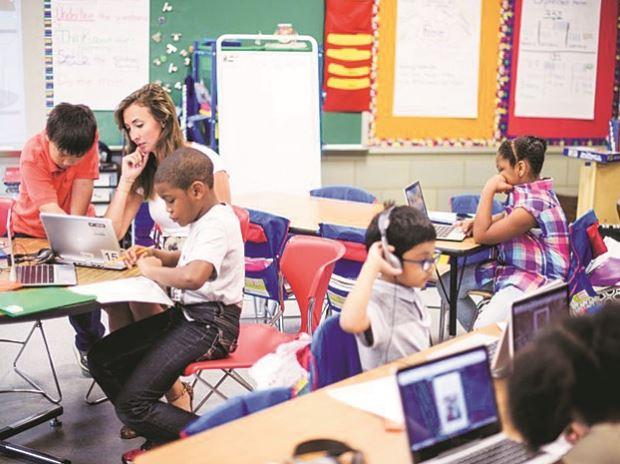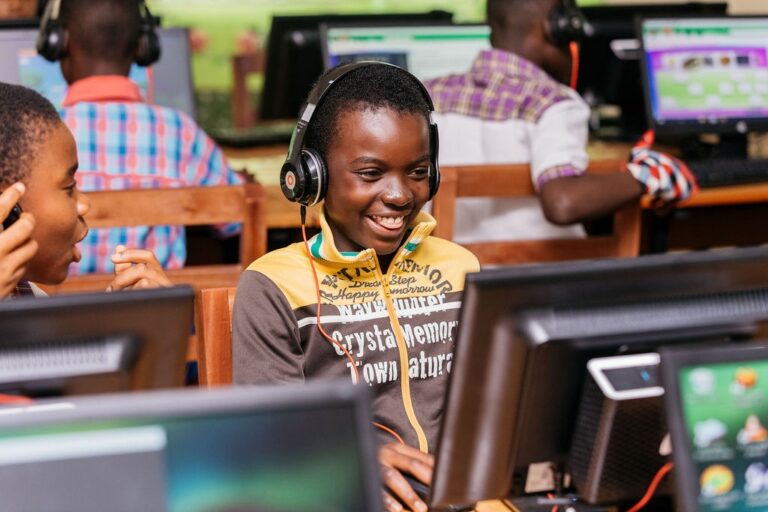Tarun Cherukuri & Shijoy Varughese | January 31, 2018
Budget 2018 allocations to Sarva Shiksha Abhiyan by the Government of India remains far below the resource estimates submitted by the HRD ministry.
Eklavya, the archery prodigy from the ancient Indian epic The Mahabharata, could never attend the school of his choice. The social status ascribed to him by birth did not allow him to study with the privileged in the social hierarchy. 2500 years hence, and 70 years after independence, elementary education in India is still deeply segregated. A majority of children from socio-economically disadvantaged families attend government schools while children from more privileged families attend high or middle income private schools. Besides depriving children of the well documented benefits of diverse classrooms, this segregation has a direct correlation to the nature of profession that these children take up as adults. Section 12 (1) (c) of the Right to Education(RTE) Act, 2009, also known as the RTE 25% provides for the creation of inclusive classrooms by mandating private unaided and specified category schools to admit in class I, to the extent of at least 25% of the strength of that class, children belonging to socio-economically disadvantaged families and provide free and compulsory elementary education till 8th grade.
The spirit of the law asserts the right of children to study in the school of their choice irrespective of their socio-economic background. Since its enactment, the provision has been one of the most vigorously debated aspects of RTE with its validity being asserted by the Supreme Court of India, High Courts of various States and by the T.S.R Subramanian Committee formed by the Ministry of Human Resource Development(MHRD). Therefore, as a nation we are well past the debate on the validity of this provision and are now in a stage wherein we need to find solutions to the advanced administrative impediments arising on account of the implementation of this policy.
Each year, more than 2 million children stand to benefit from this provision. In its reply to an
unstarred question in the recently concluded winter session of the Parliament, the government stated that in the year 2016-17, close to 3 million children were enrolled under RTE 25% admissions policy. The policy is at a different stage of evolution in different parts of the country. The States and Union Territories(UTs) could broadly be categorised to be in two categories vis-a-vis the implementation of this provision. The first category comprises of states who have either not notified the policy or have not made enough efforts to implement it in right earnest. The second category consists of those states who are striving towards the implementation of the provision in letter and spirit, have met reasonable success and are now grappling with higher order issues like those of student retention and reimbursement management. For the first category States and UTs, what is needed is administrative and political will to adopt best practices from the several years of experience of States in the second category and leapfrog to a more advanced stage of implementation. The biggest challenge faced by the second category schools is with respect to reimbursements from the government.
The RTE Act states that schools admitting children under this provision “shall be reimbursed
expenditure so incurred by it to the extent of per-child-expenditure incurred by the State, or the actual amount charged from the child, whichever is less, in such manner as may be prescribed.” Over the past 3 years, the budget allocations for SSA by the Government of India remains far below the resource estimates submitted by MHRD to the Government of India(GoI). SSA received only 22,015 crore (revised estimates) in FY 2015-16 as opposed to a demand of 50,000 crore by MHRD and 22,500 crore (RE) in FY 2016-17 for a demand of’55,000 crore.
Additionally, GOI allocations for Sarva Shikha Abhiyaan as a share of total MHRD allocations has been constantly decreasing, reducing from 33% of MHRD allocations in FY 2015-16 to 31% in FY 2016-17 and 29% in FY 2017-18. These inconsistencies have a direct bearing on the implementation of Section 12 (1) (c). According to the numbers provided by the government in the Parliament, from 2014-2017, 7.16 million children have been enrolled under the RTE 25% provision. Assuming a 10% drop out rate, and a conservative average per child cost of Rs.5,000, the outlay for the year 2016-17 should have been at least Rs. 3,220 cr. However, only 510 cr was actually approved, leading to a 6 fold deficit. Clearly, there is a need to increase budget allocations made to the MHRD under SSA.With MHRD already allocating less that what States demand for, and GoI allocating less than what MHRD asks for, the shortage is compounded. Therefore, there is an urgent need to increase the budgetary allocations under SSA if the States are to reimburse schools who are admitting children under this provision. Non receipt of reimbursement could potentially result in further reduction of school participation rates and even states backing out from implementing this provision as recently indicated by the state
of Uttarakhand.
There are more micro level issues vis a vis reimbursements that needs urgent resolutions. For instance, the per child cost calculated by States takes into account only recurring costs and not the costs associated with fixed capital assets. This leads to reimbursements amounts which are much less than what schools actually spend on each child. Also, costs incurred by a parent in high and middle income private schools go much beyond tuition fees and costs associated with books and uniforms. It is here that we see an opportunity to link Corporate Social Responsibility(CSR) with the education of children from socio-economically disadvantaged families admitted under this provision. Additionally, every state is now moving towards digitising the whole RTE 25% admission process with end to end Management Information Systems(MIS) which include modules like school registration, applicant registration, online lottery, student tracking and reimbursement management which are resulting in a more transparent and cost effective implementation of the policy. There is a huge potential for IT firms to support development of these online systems through their CSR commitments.
There is no denying that the implementation of this policy is fraught with challenges. However, the good news is we have proven solutions to these challenges. It would be an absolute travesty of justice if each year millions of children are deprived of access to the quality education in the school of their choice for want of appropriate budgetary allocations. It is high time we ensure that our Eklavyas and Arjuns study together in the same classroom with equitable distribution of resources to help integrate the socio-economically underprivileged children into formal education. For this, all stakeholders viz. the government, corporates and the civil society need to comes together to ensure ‘collective impact’ and the government needs to make its commitment to this policy unambiguously clear. The beginning of making this commitment clear is allocating requisite funds and budget 2018-19 is an excellent opportunity to get the ball rolling.




![[Preliminary Report] CRNA Collaborative Research for Exploring Factors Nurturing"Happy and Resilient" Children among Asian Countries](https://equity-ed.net/wp-content/uploads/2024/09/1725672182698.jpg)

